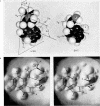Abstract
A number of tryptamine analogues and other exciter agents have been tested on the heart of Venus mercenaria. The method of estimation of potency, especially for irreversibly acting compounds, is discussed. Specificity of action with respect to the site of action of 5-hydroxytryptamine is defined experimentally. The specific activity of tyramine and phenethylamine and the non-specific excitatory action of indole and skatole indicate that the indole ring is neither necessary nor sufficient for 5-hydroxytryptamine-like activity. Tryptamine analogues differ in mode of action as well as potency. Congeners without a 5-hydroxyl group tend to act more slowly and irreversibly as well as less strongly than 5-hydroxytryptamine. Methyl substitution also increases the time of action and difficulty of reversal. However, the potency of such compounds may be increased or decreased depending upon the position of substitution and the presence of the 5-hydroxyl group. The relations between structure and potency and mode of action are discussed. Suggestions are made concerning the effective conformation of the 5-hydroxytryptamine molecule and the nature of its receptor.
Full text
PDF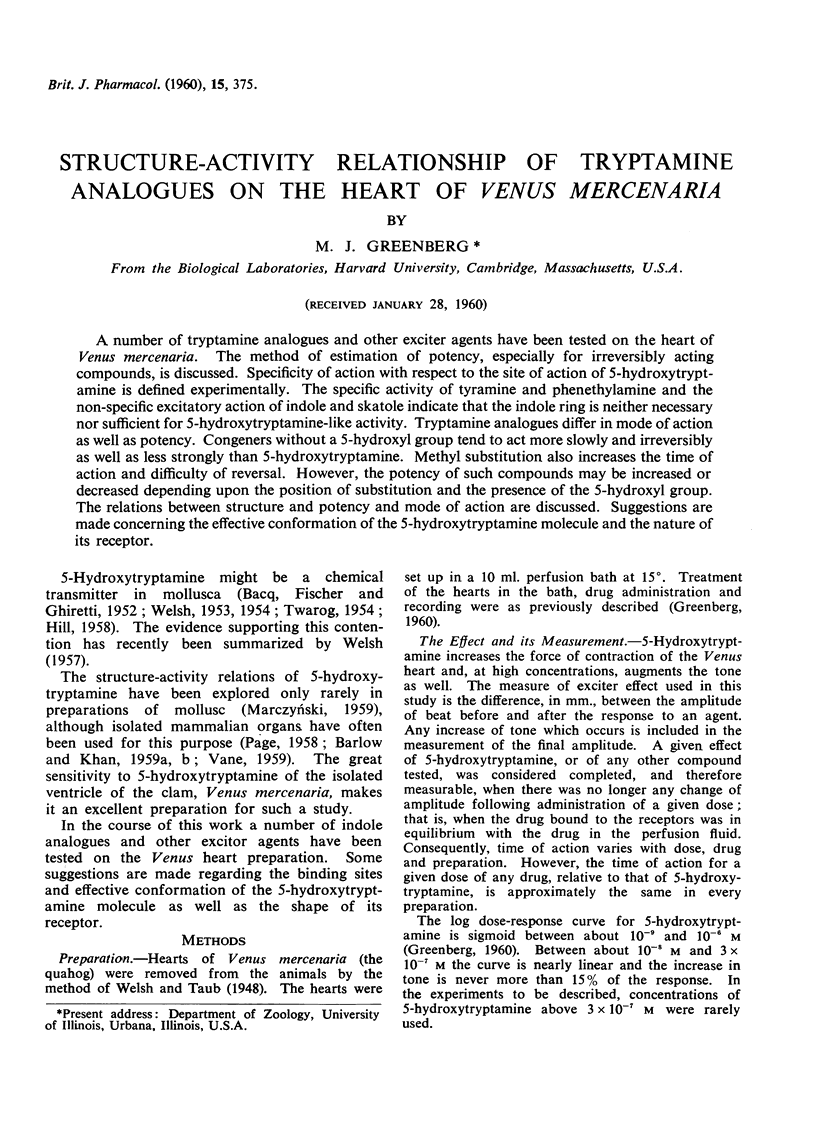
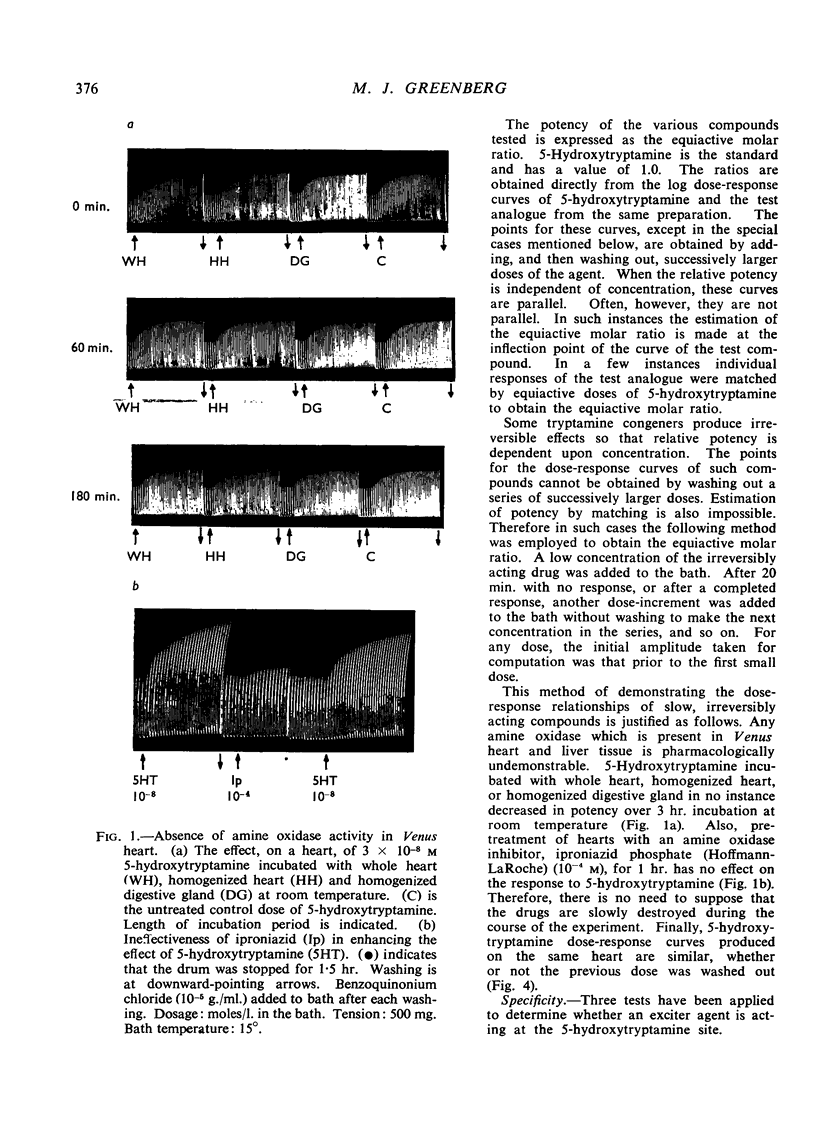
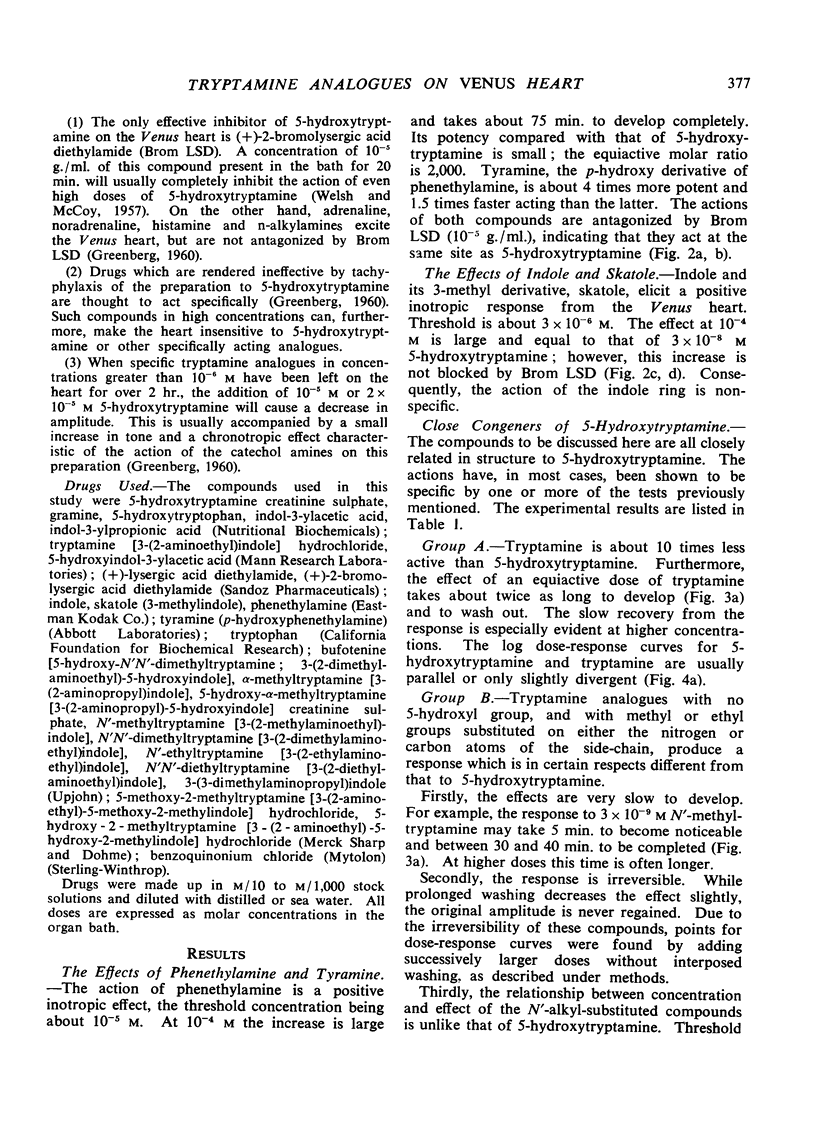
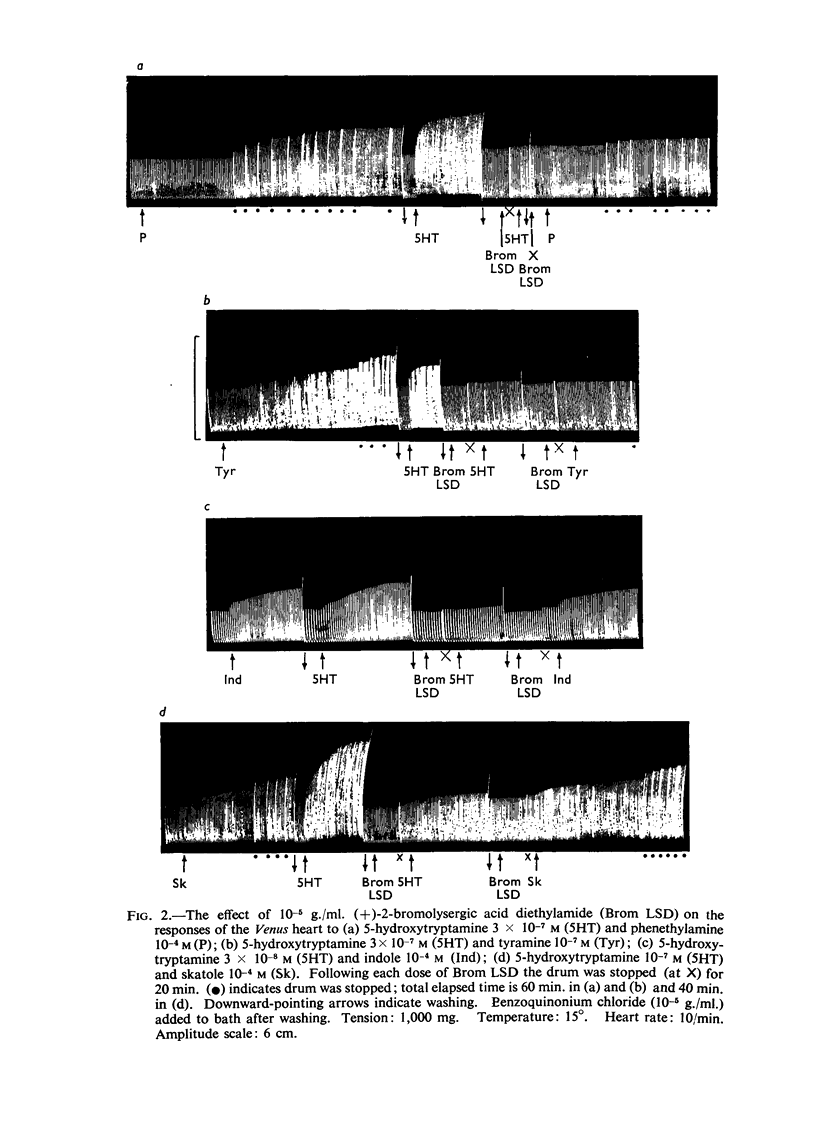
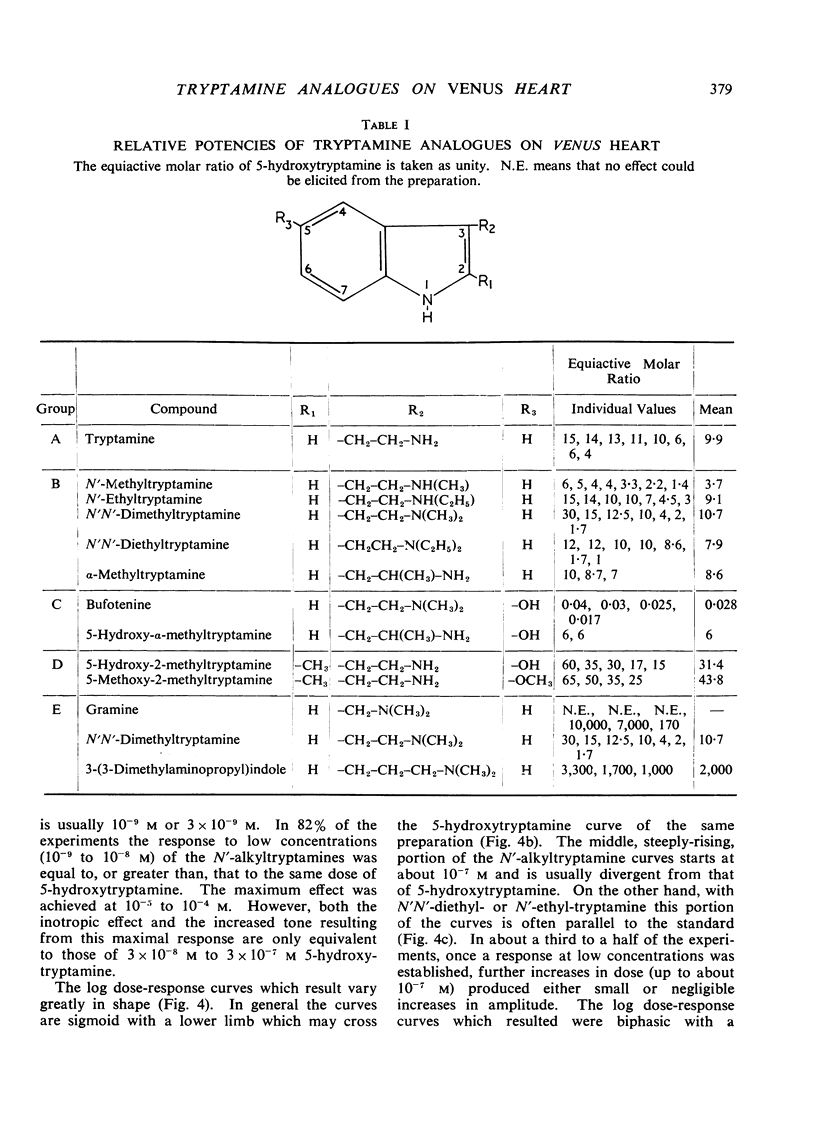
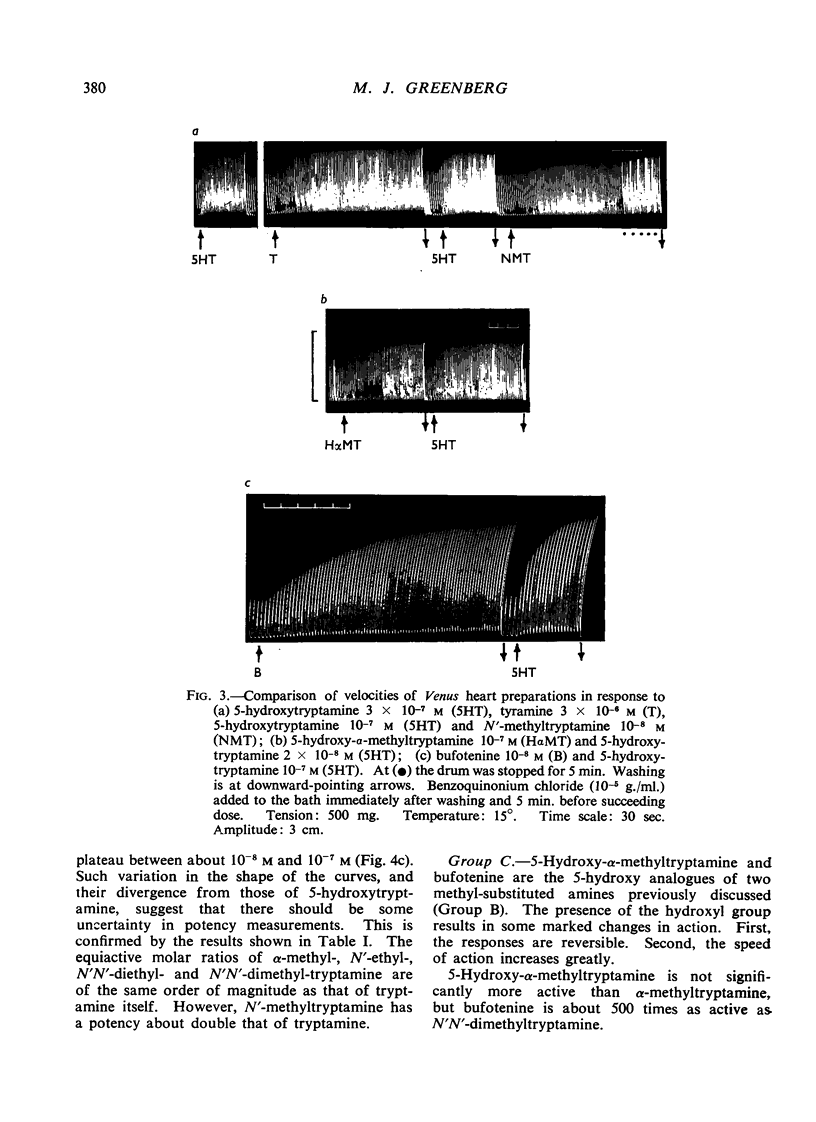
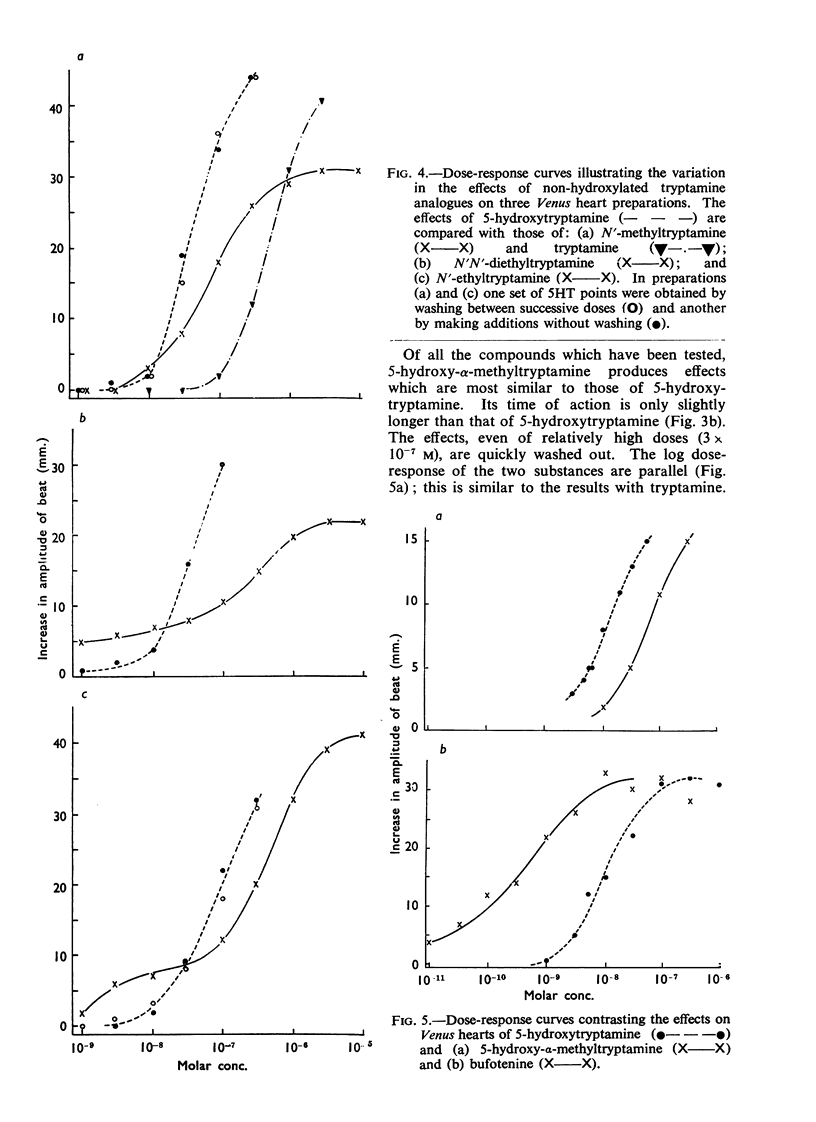
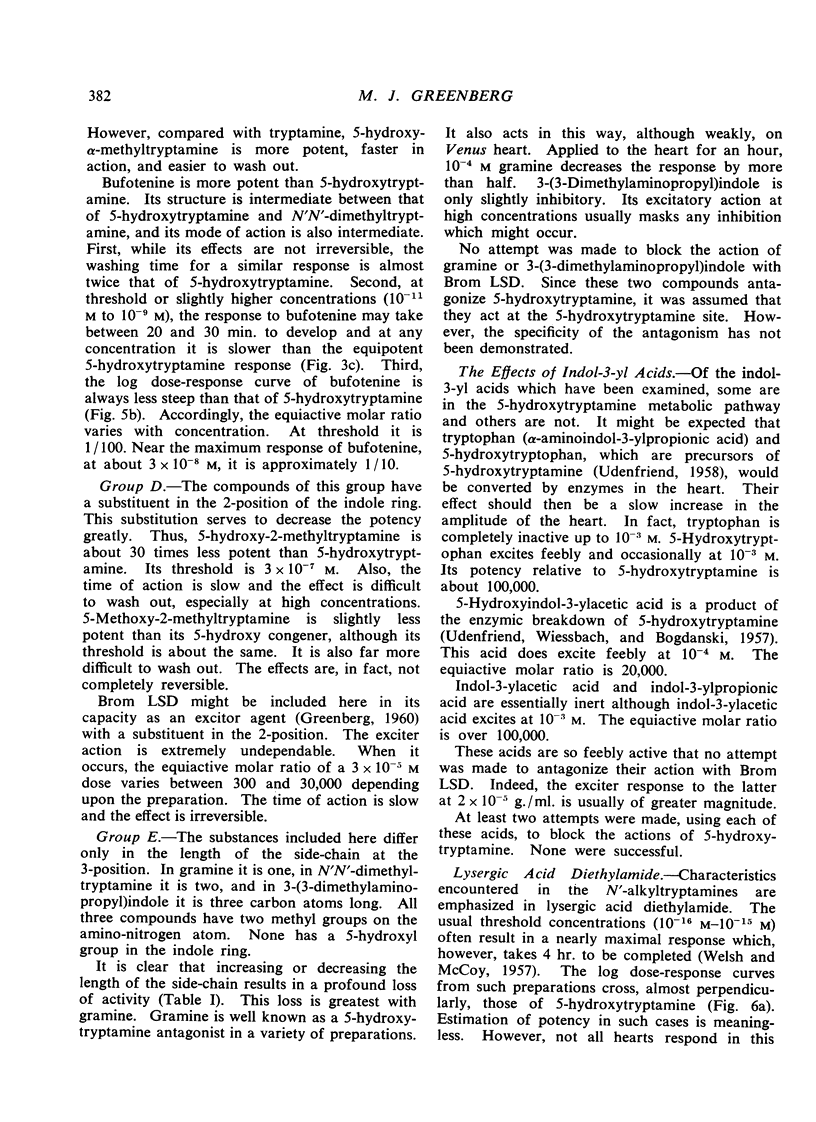
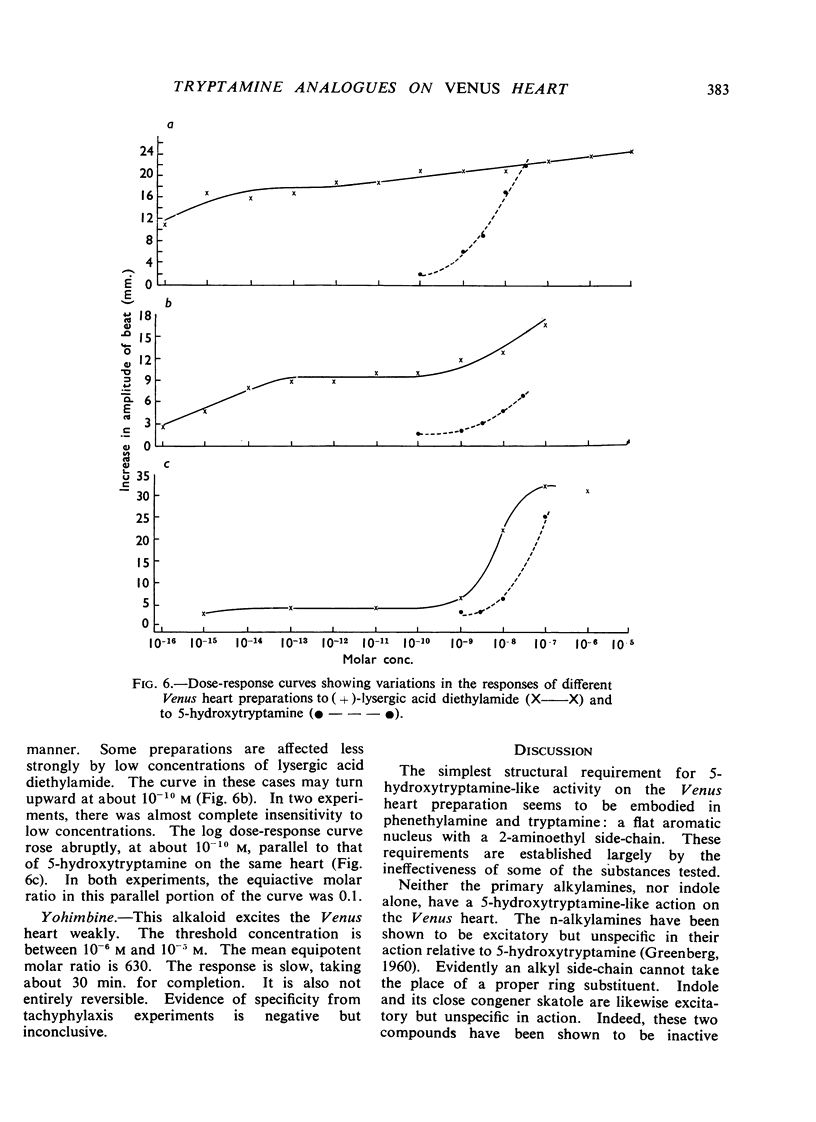
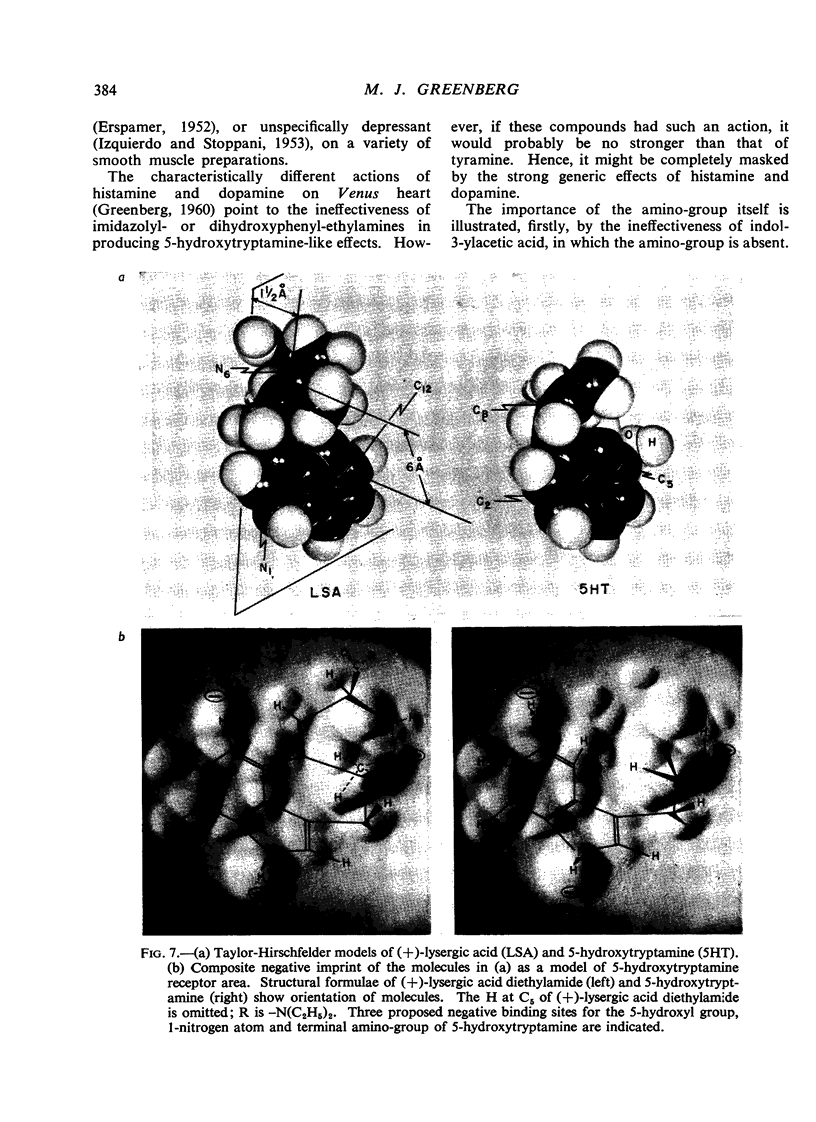
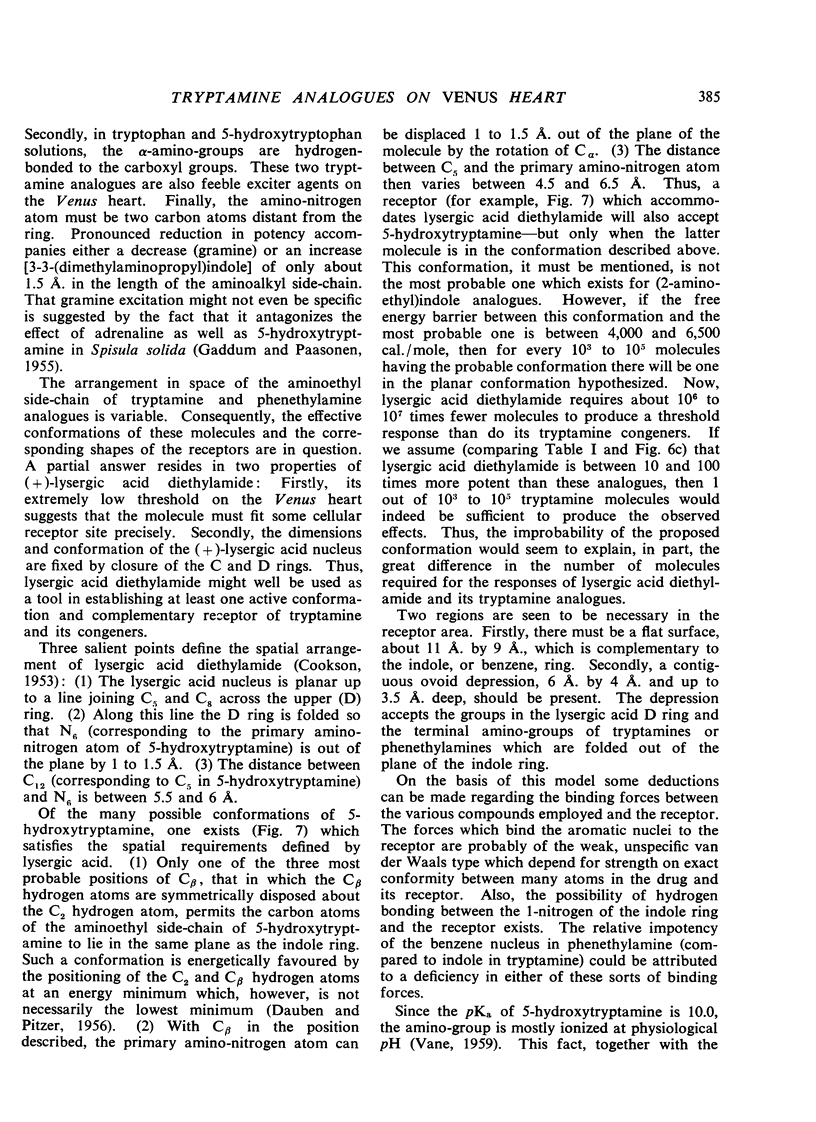
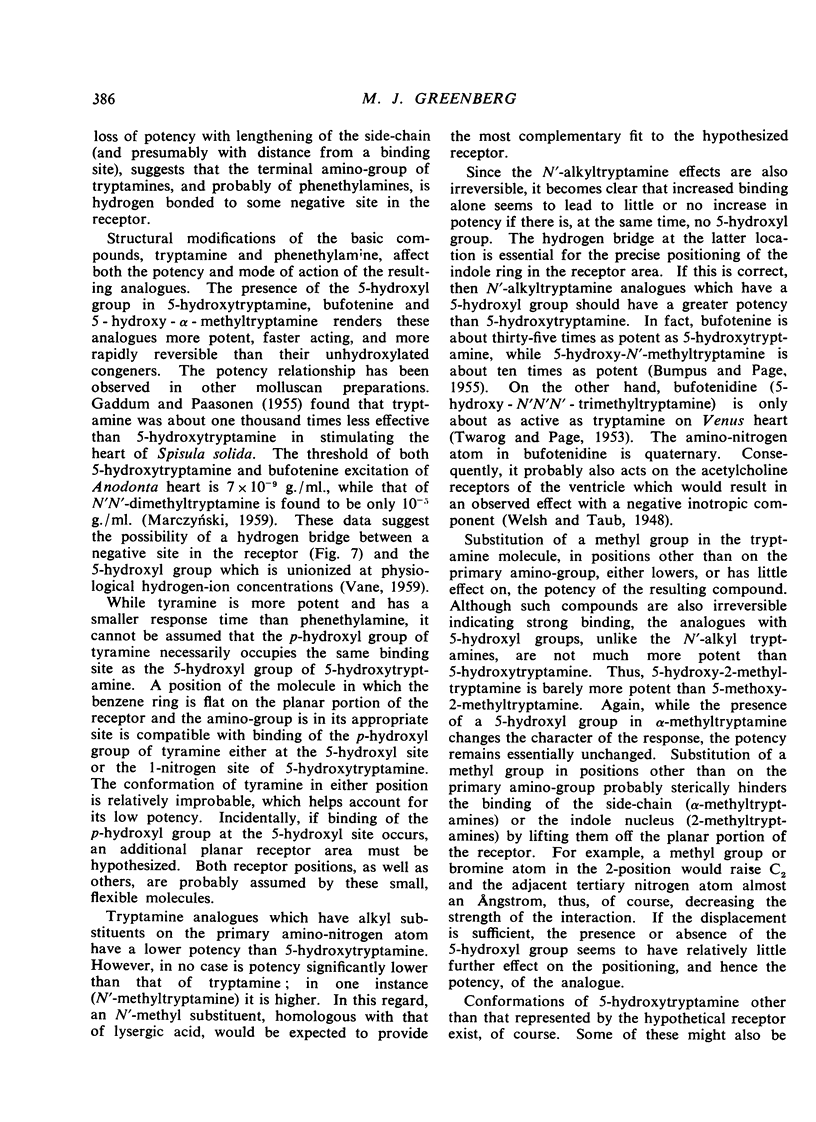
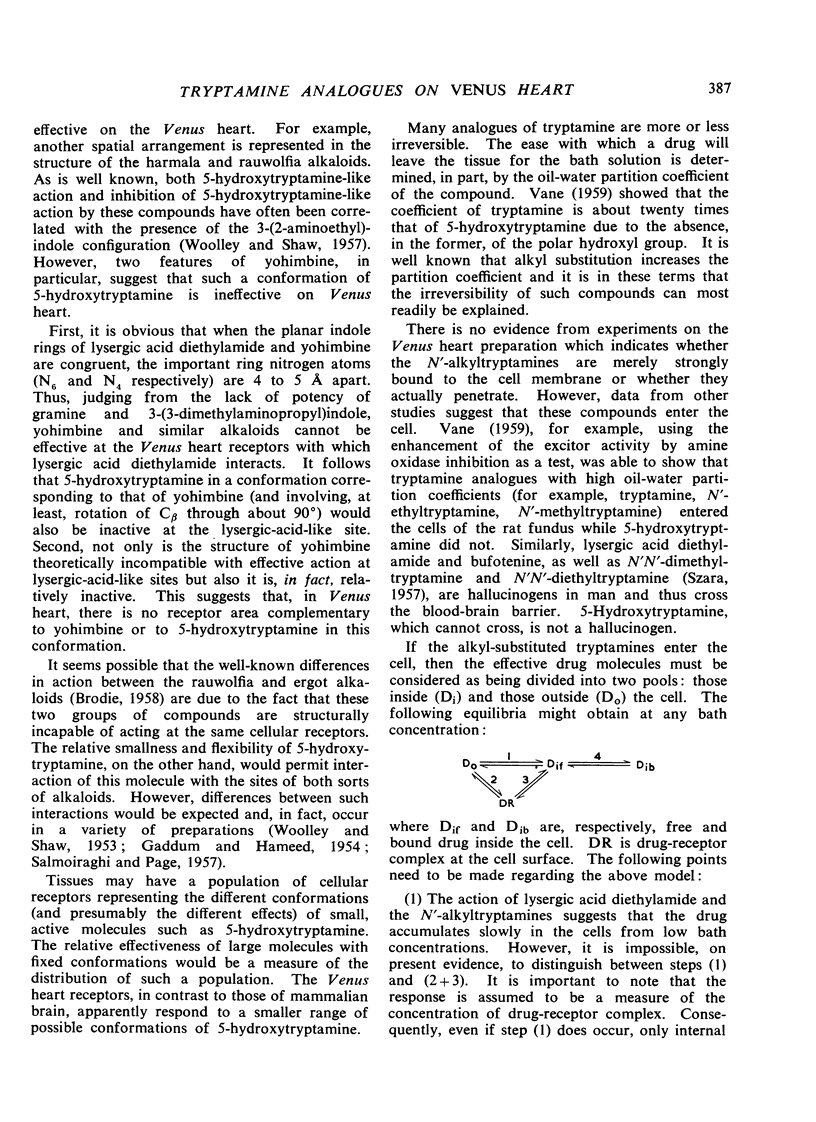
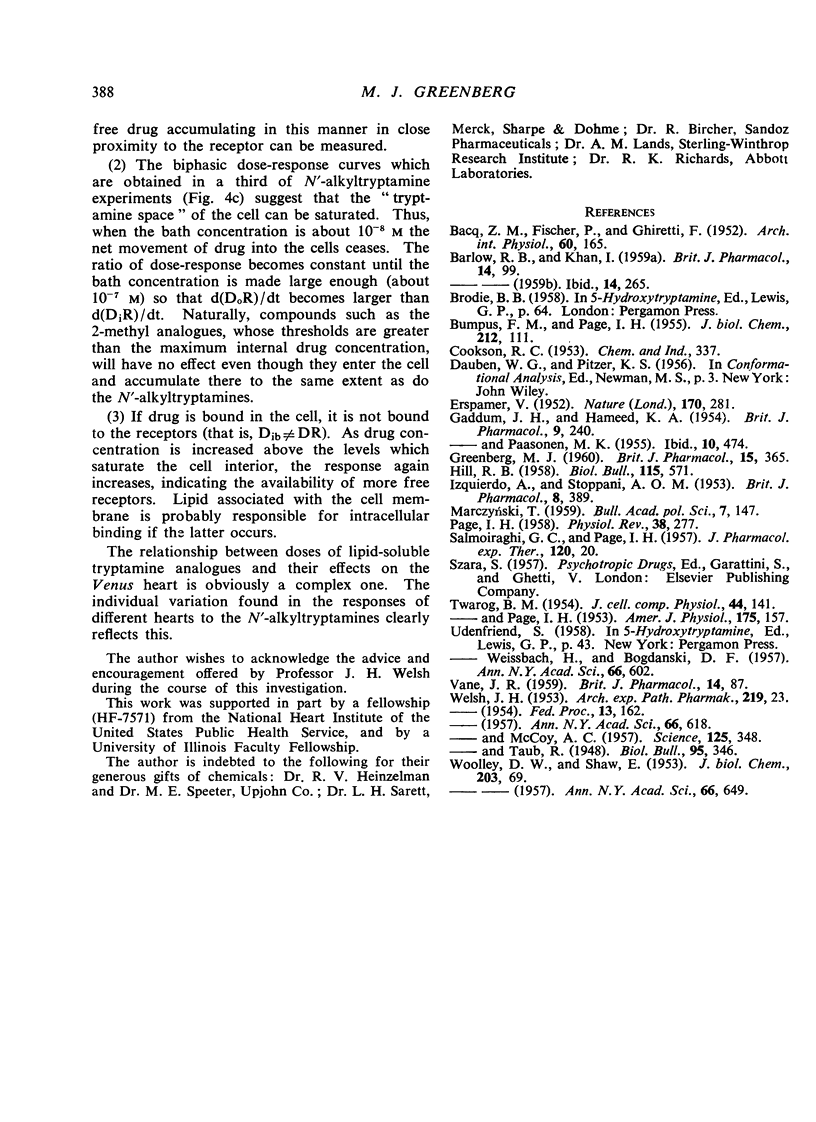
Images in this article
Selected References
These references are in PubMed. This may not be the complete list of references from this article.
- BACQ Z. M., FISCHER P., GHIRETTI F. Action de la 5-hydroxytryptamine chez les céphalopodes. Arch Int Physiol. 1952 Jun;60(2):165–171. doi: 10.3109/13813455209145054. [DOI] [PubMed] [Google Scholar]
- BARLOW R. B., KHAN I. Actions of some analogues of tryptamine on the isolated rat uterus and on the isolated rat fundus strip preparations. Br J Pharmacol Chemother. 1959 Mar;14(1):99–107. doi: 10.1111/j.1476-5381.1959.tb00934.x. [DOI] [PMC free article] [PubMed] [Google Scholar]
- BUMPUS F. M., PAGE I. H. Serotonin and its methylated derivatives in human urine. J Biol Chem. 1955 Jan;212(1):111–116. [PubMed] [Google Scholar]
- ERSPAMER V. Biological activity of some enteramine-related substances. Nature. 1952 Aug 16;170(4320):281–282. doi: 10.1038/170281b0. [DOI] [PubMed] [Google Scholar]
- GADDUM J. H., HAMEED K. A. Drugs which antagonize 5-hydroxytryptamine. Br J Pharmacol Chemother. 1954 Jun;9(2):240–248. doi: 10.1111/j.1476-5381.1954.tb00848.x. [DOI] [PMC free article] [PubMed] [Google Scholar]
- GADDUM J. H., PAASONEN M. K. The use of some molluscan hearts for the estimation of 5-hydroxytryptamine. Br J Pharmacol Chemother. 1955 Dec;10(4):474–483. doi: 10.1111/j.1476-5381.1955.tb00108.x. [DOI] [PMC free article] [PubMed] [Google Scholar]
- IZQUIERDO J. A., STOPPANI A. O. Inhibition of smooth muscle contractility by indole and some indole compounds. Br J Pharmacol Chemother. 1953 Dec;8(4):389–394. doi: 10.1111/j.1476-5381.1953.tb01335.x. [DOI] [PMC free article] [PubMed] [Google Scholar]
- MCCOY A. C., WELSH J. H. Actions of dlysergic acid diethylamide and its 2-bromo derivative on heart of Venus mercenaria. Science. 1957 Feb 22;125(3243):348–348. doi: 10.1126/science.125.3243.348. [DOI] [PubMed] [Google Scholar]
- PAGE I. H. Serotonin (5-hydroxytryptamine); the last four years. Physiol Rev. 1958 Apr;38(2):277–335. doi: 10.1152/physrev.1958.38.2.277. [DOI] [PubMed] [Google Scholar]
- SALMOIRAGHI G. C., PAGE I. H. Effects of LSD 25, BOL 148, bufotenine, mescaline and ibogaine on the potentiation of hexobarbital hypnosis produced by serotonin and reserpine. J Pharmacol Exp Ther. 1957 May;120(1):20–25. [PubMed] [Google Scholar]
- TWAROG B. M., PAGE I. H. Serotonin content of some mammalian tissues and urine and a method for its determination. Am J Physiol. 1953 Oct;175(1):157–161. doi: 10.1152/ajplegacy.1953.175.1.157. [DOI] [PubMed] [Google Scholar]
- UDENFRIEND S., WEISSBACH H., BOGDANSKI D. F. Biochemical findings relating to the action of serotonin. Ann N Y Acad Sci. 1957 Mar 14;66(3):602–608. doi: 10.1111/j.1749-6632.1957.tb40750.x. [DOI] [PubMed] [Google Scholar]
- WELSH J. H. Excitation of the heart of Venus mercenaria. Naunyn Schmiedebergs Arch Exp Pathol Pharmakol. 1953;219(1-2):23–29. doi: 10.1007/BF00246246. [DOI] [PubMed] [Google Scholar]
- WOOLLEY D. W., SHAW E. Antimetabolites of serotonin. J Biol Chem. 1953 Jul;203(1):69–79. [PubMed] [Google Scholar]



